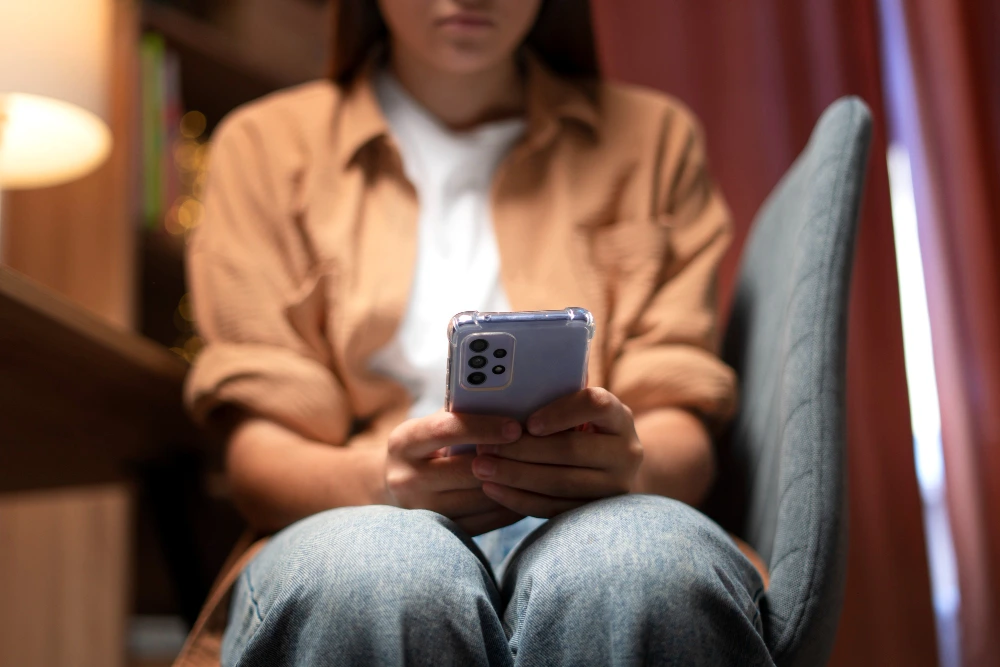
In our modern, technology-driven world, smartphones have become an essential part of daily life. From work emails to social media updates, news notifications to streaming entertainment, our phones are constantly vying for our attention. While these devices bring incredible convenience, the downside is becoming increasingly evident: excessive phone use can disrupt productivity, strain relationships, and negatively affect mental health. As screen time continues to rise globally, the need to establish healthy phone boundaries has never been more critical.
By setting thoughtful limits on our device usage, we can reclaim control over our time, focus, and overall well-being. This guide will explore why phone boundaries matter, how to identify the signs that you need them, practical steps for setting limits, and strategies for maintaining a phone-free lifestyle.

Why Phone Boundaries Matter
Effects of Excessive Phone Use on Mental Health
Research consistently shows that overuse of smartphones can have significant effects on mental health. Constant exposure to notifications, social media, and news updates can contribute to feelings of stress, anxiety, and even depression. The habit of constantly checking your phone can prevent your mind from fully relaxing, making it difficult to enjoy downtime or focus on meaningful tasks.
Moreover, excessive phone use often promotes comparison and self-criticism. Scrolling through carefully curated social media feeds can create unrealistic expectations, fostering dissatisfaction and reducing overall happiness. Implementing digital boundaries helps break this cycle, allowing space for reflection, mindfulness, and emotional balance.
Impact on Sleep, Focus, and Personal Relationships
Smartphones often disrupt essential aspects of daily life. Many people check their devices right before bed, exposing themselves to blue light that can interfere with natural sleep patterns. Poor sleep, in turn, affects mood, focus, and cognitive performance.
At the same time, constant phone use can erode personal connections. It is easy to miss out on real-life conversations when half of your attention is absorbed by a screen.
Productivity suffers too—frequent phone interruptions during work or study break your flow and make it harder to complete tasks efficiently. By setting phone usage habits that prioritize attention and presence, you can enhance both personal and professional aspects of your life.

The Rise of Smartphone Addiction
Smartphone addiction is a modern phenomenon fueled by apps and platforms designed to capture attention. Notifications, likes, and algorithm-driven content create loops that keep users engaged far longer than intended. Many people experience phantom vibrations, compulsively check for updates, or feel anxious when separated from their devices.
Recognizing this as a behavioral pattern rather than a simple habit is key. Developing conscious screen time management strategies allows you to use technology intentionally rather than letting it control your daily life.
Signs You Need Phone Boundaries
Identifying when your phone habits are becoming unhealthy is the first step in establishing digital boundaries. Here are some common indicators:
Constantly Checking Notifications
If you find yourself reaching for your phone at every ping or vibration—even when you are busy or in the middle of conversations—it may be a sign of over-dependence. Continuous notification checking interrupts focus and reinforces anxiety, making it difficult to disconnect.
Feeling Anxious Without Your Phone
Separation anxiety from devices is another warning sign. If leaving your phone behind or being unable to check it triggers stress, irritability, or restlessness, it’s time to rethink your phone usage habits.
Ignoring Real-Life Conversations
Phones can distract from meaningful interactions. If you notice yourself scrolling during meals, meetings, or social gatherings, it suggests that your device is taking precedence over real-life connections.
Reduced Productivity or Creativity
Excessive screen time often stifles productivity. Constant notifications, social media scrolling, or multitasking with a phone prevents deep work and creative thinking. If you find yourself struggling to complete tasks, this may indicate a need for structured screen time management.
Practical Steps to Set Phone Boundaries
Creating healthy phone boundaries does not require extreme measures. Small, consistent adjustments can make a significant difference.
Setting Specific Phone-Free Times
Designating times of the day when your phone is off-limits is highly effective. Consider these moments:
- Morning routine: Avoid checking your phone for at least the first 30–60 minutes of your day. Start with meditation, exercise, or reading instead.
- Meals: Make mealtimes phone-free to enhance mindfulness and foster connection with family or friends.
- Bedtime: Establish a digital curfew at least an hour before sleep to improve rest quality.
Using App Timers and Digital Wellbeing Tools
Most smartphones offer built-in digital detox tools that allow you to track usage and set limits on specific apps. Third-party apps can also provide reminders and enforce time restrictions. Setting these timers encourages self-awareness and helps maintain consistent boundaries.
Creating Phone-Free Zones at Home or Work
Designate areas where phones are not allowed—such as bedrooms, dining tables, or workspaces. By physically separating yourself from your device, you reinforce intentional usage and reduce compulsive checking.
Turning Off Unnecessary Notifications
Notifications are designed to grab your attention. Turning off alerts for non-essential apps allows you to control when and how you interact with your phone, promoting a more focused and less reactive lifestyle.
Mindful Phone Usage Tips
Once you’ve established basic boundaries, incorporating mindful practices ensures that your phone-free lifestyle is sustainable.
Scheduling Social Media and Messaging Checks
Instead of constant monitoring, set specific times to check messages, emails, and social media. This prevents endless scrolling and reduces anxiety while allowing you to stay informed and connected.
Practicing Intentional Scrolling or Usage
Use your phone with purpose rather than habitually. Ask yourself whether opening an app serves a meaningful function or is simply a filler activity. This small shift in mindset can dramatically improve screen time management.
Replacing Phone Time with Hobbies or Outdoor Activities
Invest time in non-digital activities such as reading, walking, exercising, or creative pursuits. Engaging hobbies reduce reliance on screens and improve mental health, energy, and overall satisfaction.
Maintaining Healthy Phone Habits Long-Term
Creating boundaries is only the first step. Maintaining them requires ongoing effort and adaptation.
Tracking Progress and Adjusting Boundaries
Monitor your phone usage regularly to understand which habits are improving and which need adjustment. Use screen time reports, journaling, or habit trackers to maintain awareness and accountability.
Involving Family or Friends for Accountability
Encourage loved ones to join your digital detox initiatives. Sharing goals with others reinforces commitment and makes the process more enjoyable. Family or group challenges—like phone-free dinners or weekend detoxes—can be particularly motivating.
Combining with Other Digital Detox Strategies
Healthy phone boundaries are most effective when part of a broader approach to reducing digital overload. Consider practices such as:
- Limiting unnecessary online subscriptions
- Scheduling tech-free weekends or evenings
- Engaging in mindfulness, yoga, or meditation
- Prioritizing face-to-face interactions over virtual ones
Benefits of Setting Healthy Phone Boundaries
Establishing clear limits on device usage yields tangible benefits across multiple areas of life:
- Better focus: Less distraction enables deeper work and higher productivity.
- Improved mental health: Reduced anxiety and stress lead to better emotional well-being.
- Stronger relationships: Being present enhances communication and connection with others.
- More free time: Less screen time opens up space for hobbies, exercise, and self-care.
- Better sleep quality: Reducing nighttime phone use improves rest and rejuvenation.
Conclusion
The modern smartphone is a powerful tool, but without digital boundaries, it can quickly dominate our time and attention. By recognizing the signs of overuse, setting clear phone usage habits, practicing mindful interaction, and committing to a phone-free lifestyle, you can regain control of your daily routine.
Start small—perhaps with a phone-free morning or a single digital curfew—and gradually build lasting habits. Over time, the benefits become evident: enhanced focus, improved mental health, deeper connections, and more time for the things that truly matter. Taking intentional steps toward healthy phone boundaries is not just about reducing screen time—it’s about reclaiming your life in a digitally connected world.



